We become designers by cultivating our ability to listen, by developing a sense
- both musically and physiologically - of the gestural language of sound, and by coming to feel the
scale of sound for the stage and for the actor's voice. When we see the entire theatrical experience
as one that we compose, by unfolding sonic elements thoughtfully and artfully over time,
we become sound designers for the theatre.
A student-centered curriculum focused on project-based learning allows students to explore design.
Stepping through ever more complex design challenges allows for skill-building, the development of a critical ear,
and increasing awareness of the implicit emotional resonance that sound offers as a storytelling tool.
They attune their ears to sounds and the quality of the sonic environment,
refine their narrative and emotional storytelling, and develop their collaboration and communication skills.
Technical skills in content creation and audio systems allow students to turn their concepts into realized productions.
All of this growth and experience leads to the most important part of education -
the self-esteem that comes with discovering what you're really capable of after creating something totally original.
If you are a musician, there is a place for you in design. If you are into technology, there is a place for you in design.
If you have a love of theater, if you perform or crew, there is a place for you in design. If you compose, if you love music,
if you know computers, if you play video games, if you work in film - there is a place for you in design.
Sound design is the most welcoming field for all people who care about sound and music; through growth in design, we can discover
all kinds of innate and learned skills. It is a powerful field for uncovering hidden passions and undiscovered ability.
I think it is the most powerful, most expressive, and most enjoyable work in the world, and if you want to try it, there is a place for you.
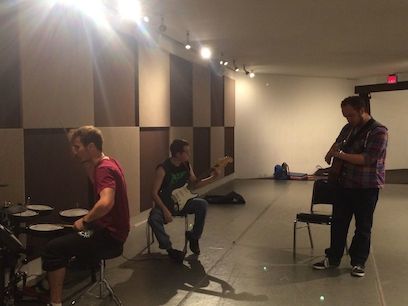 The actors write and record the youthful rock score for The Merchant of Venice. |
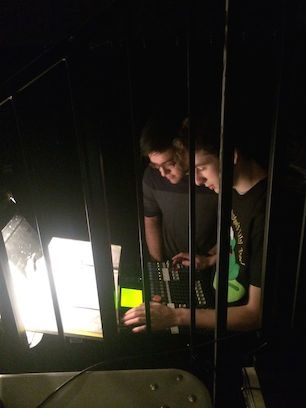 Sound design students route the digital mixer for A New Brain. |
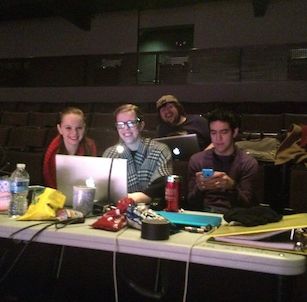 The sound team techs Cat on a Hot Tin Roof. |
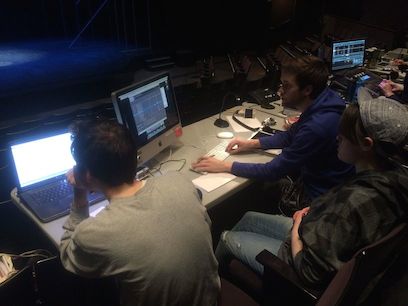 The sound team techs Dead Man's Cell Phone. |
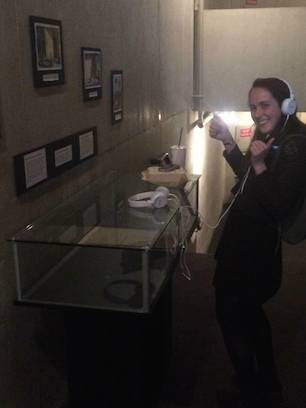
A student sound designer listens to her original sound art
installed in the lobby display for Dead Man's Cell Phone.
to route signal to the PA and to stage monitors, to mix life music and to collaborate with musicians
on their monitor mixes. We hosted guest musicians, and students in class periodically volunteered as the talent during classtime.
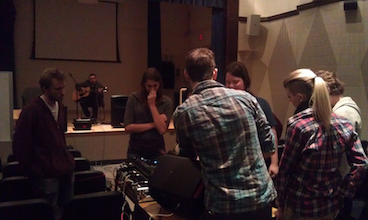
|
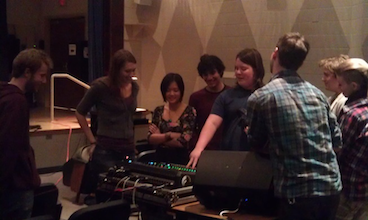
|
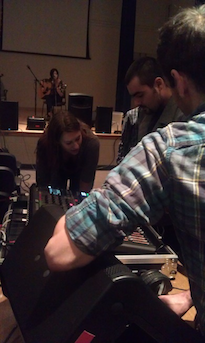
|
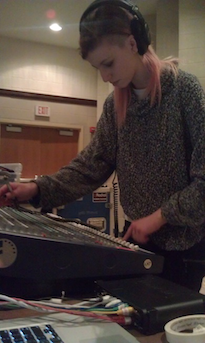
|
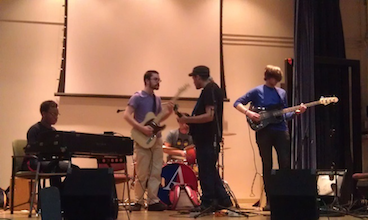
|
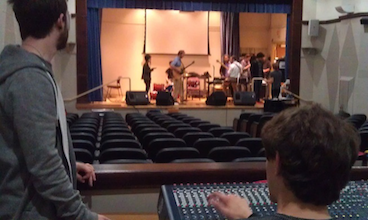
|
to design sound and music for a DWC video which screened at the end of the two-week program.
In addition, they participated in a recording session in AU's recital hall and toured a professional recording studio.
One student produced a cover song by multitracking his guitar, another remixed a classic rap song,
and a third combined sampling with midi to create a piece of electronica.
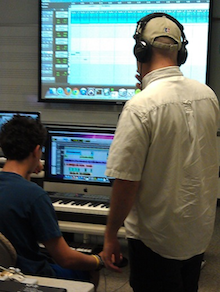
|
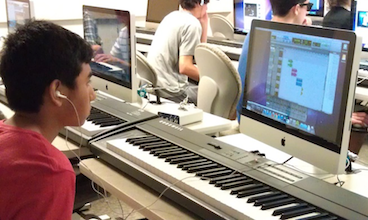
|
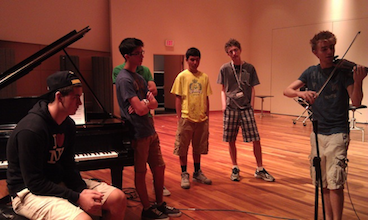
|
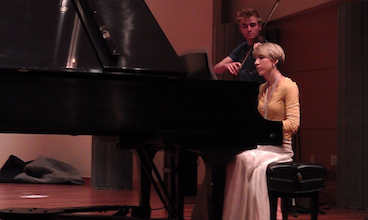
|
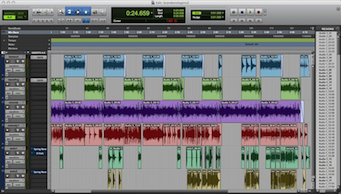
|
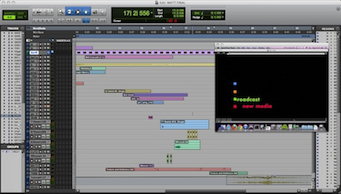
|
Theater games, vocal and physical exercises helped us explore the potential of the human actor onstage.
Over the course of the program, each student wrote an original play; readings of these plays
offered students the chance to hear their work aloud, discuss their work and make revisions.
We finished by assigning roles and staging each of the plays. The kids were wonderful,
remembering their lines and blocking, and bringing fresh ideas and enthusiasm to the work.

|

|

|

|
